Invisalign® Clear Aligners – Huntington, NY
Straighten Your Smile Seamlessly!

Traditional braces may be highly effective when it comes to repositioning teeth and improving bites, but many teenagers and adults simply want a more esthetic alternative. At Huntington Orthodontics, we want to help our older patients discover the orthodontic plan that best fits their lifestyle and priorities, which is why Invisalign Clear Aligners are available! Like the names suggest, this service offers a very subtle way to realign smiles that virtually no one will even notice in your everyday life. To see if you’re the right candidate, don’t hesitate to contact our Huntington, NY dental office and schedule a consultation with Dr. Justyna.
Why Choose Huntington Orthodontics for Invisalign® Clear Aligners?
- Image-Friendly Orthodontics – No Wires & Braces Required!
- $250 Off Same-Day Invisalign Treatment
- Zero-Interest Payment Plans Available
Invisalign® Clear Aligners
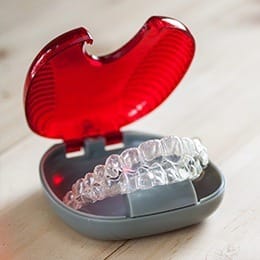
Instead of the traditional braces model, Invisalign takes a new approach – patients will wear a series of clear, customized aligners. Each aligner represents a different stage of your tooth movement, and they should be worn for approximately two weeks on average before switching to the next provided aligner. The smooth, high-quality plastic is very comfortable in the mouth and also fully removable, which means patients can continue to enjoy their favorite foods and brush and floss like normal at home.
Invisalign® Teen
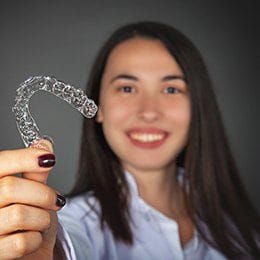
Invisalign Teen may be the perfect orthodontic fit for your image-conscious son or daughter! This system functions in nearly exactly the same way as Invisalign, with a couple of key differences. For example, a greater number of replacement aligners are available; teenagers are busy, after all, and may be more likely to misplace them by mistake. The aligners themselves also contain blue dots, which fade gradually to white over time the more they’re worn. Not only does this make it easier for Dr. Justyna to gauge her patients’ overall compliance with the treatment process, but it’s also a good reminder that it’s time to switch aligners!
Learn More About Invisalign Teen
Who Can Invisalign Help?

Wondering who Invisalign can help? Turns out, Invisalign can help patients with everything from slight spaces to more considerable overcrowding – all with clear, comfortable, and custom-made aligners. If you want to learn about some of the orthodontic problems Invisalign can address leading up to your consultation, simply read on!
Crowded Teeth
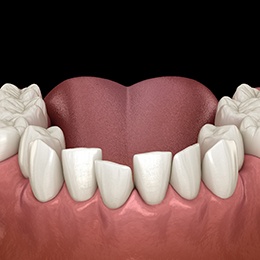
Do your teeth slightly overlap? Maybe you’re struggling with more considerable overcrowding on the top and bottom teeth. Either way, Invisalign may be an option! If we determine that you’re a candidate, then we will create a custom treatment plan as well as a series of clear aligners to bring your teeth from where they are now to where they should be.
Gaps Between Teeth
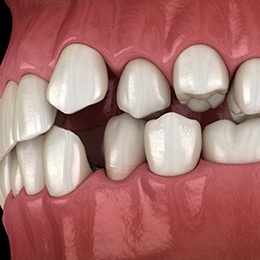
Spaced out teeth are also quite common. Like the other orthodontic problems on this list, there’s a chance that the look, health, and function of your smile can be negatively impacted. So, we recommend scheduling a consultation, even if the gaps are relatively small. That way, we can gently push your teeth back together, creating a healthy, gorgeous smile in the process.
Overbite
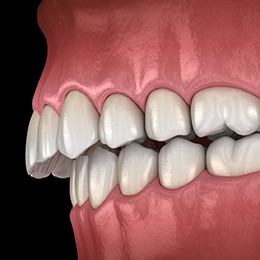
While your top teeth should sit in front of your bottom teeth, there shouldn’t be a significant space between the two. This bite problem is known as an overbite, and it can result in trouble enunciating clearly, difficulty chewing properly, and struggling to smile confidently. The good news is – if your case isn’t too severe – Invisalign may be an option, allowing you to improve your bite discreetly.
Underbite
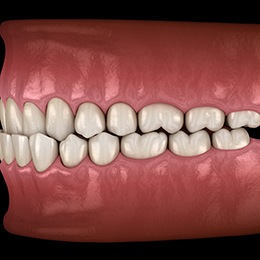
If you are struggling with the opposite problem (your lower teeth sit in front of your top teeth), then you have an underbite. Not only can this result in chronic jaw pain, but it can take a serious toll on your self-esteem, lead to TMJ dysfunction, and make it hard to speak clearly. Fortunately, rubber bands, buttons, and other orthodontic accessories can be added to Invisalign, increasing your chances of being a candidate.
Crossbite
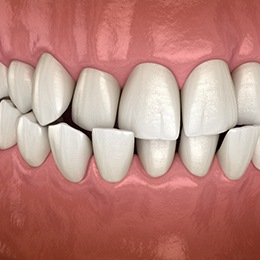
If you don’t quite have an underbite or overbite because you have a mixture of these two bite problems, then you may have a crossbite. One of the main concerns with this is premature wear and tear, which can negatively impact the look of your smile while increasing your risk of oral health problems. That’s why it’s so important that you schedule a consultation to see if you’re a candidate for Invisalign!
Open Bite
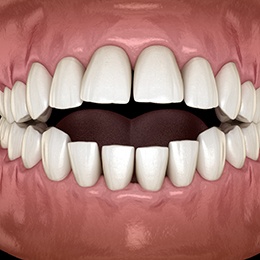
What if your upper teeth sit in front of your bottom teeth but your bite doesn’t come together evenly? When there is space between your back teeth or your front teeth when you bite down, you have an open bite. Although traditional braces are sometimes needed to address this orthodontic problem, there are some cases where Invisalign is also an option. So, it’s worth scheduling an appointment to find out!
Benefits of Invisalign
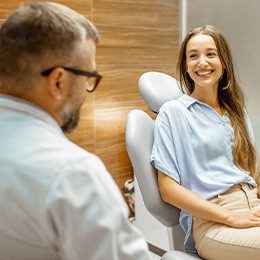
Oftentimes, patients are interested in Invisalign for one reason: the aligners are basically invisible. While that’s certainly a perk, it’s actually just one of the many benefits that come with this innovative orthodontic treatment. To learn other pros, read on!
Metal-Free, Custom-Made Aligners

Naturally, there are aesthetic benefits of metal-free braces. This change to the teeth-straightening process also results in less discomfort. In fact, many patients report that Invisalign is considerably more comfortable than traditional braces because there aren’t any brackets or wires irritating the soft tissue. Plus, the aligners are custom-made, which ensures they don’t dig into your gums or bother your tongue.
Hassle-Free Dental Hygiene

Another noteworthy perk is that you don’t need to change your oral hygiene regimen – the aligners are removable! When it comes time to brush and floss, simply take them off, rinse them with clean, cool water, store them in their designated case, and proceed as usual.
It’s also worth mentioning that keeping your aligners stain and odor-free is easy too. A soft-bristled toothbrush and clear, mild dishwashing liquid will effectively remove saliva, food particles, and other debris.
No Dietary Restrictions

Do you enjoy having toast in the morning? Maybe you like having an apple with peanut butter in the afternoon or enjoying some air-popped popcorn while watching your favorite show at night. Whatever the case may be, we have some good news: there aren’t any dietary restrictions with Invisalign! As long as you take your aligners out first and brush your teeth afterward, you can eat pretty much all of your favorite foods during your orthodontic treatment.
Shorter Average Treatment Timeline
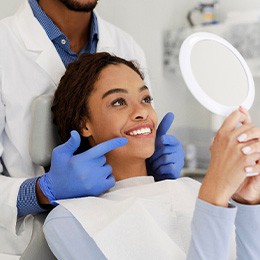
Who wants to wait three years or more to see results? With Invisalign, the average treatment timeline is only 12-18 months. Not only that, but the aligners are clear and removable. So, you’ll be able to see the progress much sooner. If you’re interested in getting an estimate of your treatment timeline, then schedule a consultation with us! That way, we can learn about important factors that impact the answer, like the complexity of your case and how many aligners need to be made.
Boosted Confidence

Last, but most certainly not least, patients with Invisalign don’t have to wait until the end of their treatment to smile confidently. Since the aligners are see-through, they won’t draw any unwanted attention to your smile – whether you’re smiling for a photo or laughing with your friends. Not only that, but you can take them off for special occasions, like a first date or a special presentation at work.
Fewer Check-In Visits
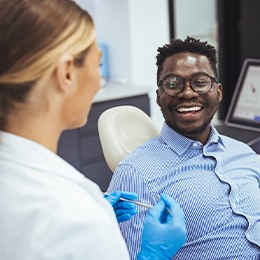
Typically, patients with traditional braces need to schedule adjustment appointments every six weeks. In contrast, patients with Invisalign typically only come in every six or eight weeks. Plus, they are often in and out of the treatment chair in 20 minutes or less. So, overall, there is less time spent at our office, and more time doing what you want!
Living with Invisalign Aligners
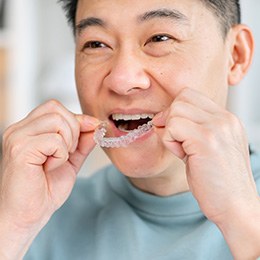
Invisalign aligners are designed to fit your teeth and your lifestyle, making orthodontic treatment easier than ever. With their discreet appearance, removable design, and comfortable construction, you’ll hardly even notice you’re wearing them! At Huntington Orthodontics, we’ve helped countless patients use Invisalign for its simplicity and convenience. Whether you’re at work, school, or out with friends, these clear aligners let you straighten your teeth without interruptions to your routine. But what exactly does life with Invisalign look like? Read more below to find out!
Wearing Your Trays
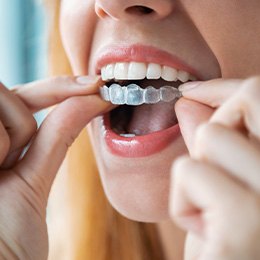
Wearing Invisalign trays is straightforward and comfortable. However, you’ll need to wear them 20–22 hours every day, removing them only to eat, drink, brush, or floss. The aligners are custom-fit, so they sit snugly on your teeth without causing irritation.
Finding your rhythm when it comes to consistent wear can take a few days, but once you find it, it’ll be easy to reach your smile goals!
Cleaning Your Aligners
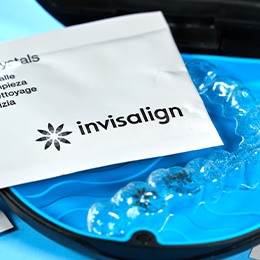
Keeping your aligners clean is also simple. Just rinse them with lukewarm (not hot) water every time you remove them and gently brush them along with your teeth daily with a soft toothbrush.
We also recommend using the included Invisalign cleaning crystals at least twice a week for a deeper clean. This ensures that your aligners stay free from discoloration, bacteria, and food particles that can make them less comfortable and discreet.
Eating & Drinking

One of the best things about Invisalign is that you don’t have to give up your favorite foods! All you have to do is remove your trays before eating or drinking anything other than water. This prevents stains or damage to your aligners, helping them stay clear and smooth.
After meals and snacks, brush your teeth and rinse your trays before putting them back in. Being consistent with your aligner care and oral hygiene will keep your treatment on track and help you achieve a straightened smile in no time!
Losing or Damaging a Tray

It’s important to keep your aligners in a protective case when they’re not in use to protect them and make them easier to find. However, if you ever lose or damage an Invisalign tray, don’t panic! While it may seem like a huge setback, it doesn’t have to be.
Just let us know as soon as you realize your aligner is compromised. In many cases, we'll simply ask you to move to your next set of aligners or fall back to a previous one while we create a replacement.
Routine Check-Ins
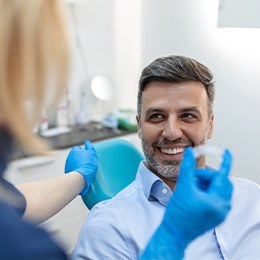
Invisalign generally requires fewer in-office visits than traditional braces, with check-ins about every 6–8 weeks. These quick appointments last around 15 minutes and allow us to monitor your progress, provide new trays, and make adjustments if needed. So, even if you have a busy schedule, you’ll never need to cancel important meetings or reschedule time out with friends.
At Huntington Orthodontics, we’ll ensure your treatment stays on track while minimizing disruptions to your schedule!
Understanding the Cost of Invisalign
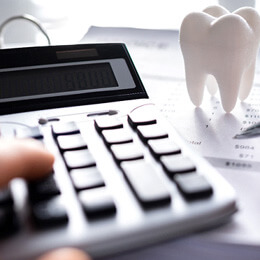
The cost of Invisalign in Huntington can vary from person to person based on a variety of factors. Because of this, we encourage all of our patients interested in Invisalign to schedule a consultation with us! We will conduct a thorough oral examination and create a treatment plan and cost estimate that we can outline with you during your visit. That way, if you have any questions or concerns, we can provide you with answers on the spot.
Factors That Affect the Cost of Invisalign
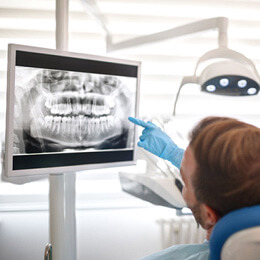
- Case Complexity: If you suffer from more aesthetic orthodontic concerns, like minor misalignment, you’ll likely require fewer aligners. This will make your treatment cost less as well. However, those who are looking to address bite misalignment in addition to crowding will require lengthier, and therefore, more costly treatment.
- Treatment Length: The longer your treatment, the more aligners you’ll need to straighten your smile. This will typically lead to a higher cost and is directly related to the complexity of your case.
- Treatment Compliance: Not wearing your trays for long enough and losing your aligners and other situations that can halt your treatment can also affect the cost.
Invisalign vs. Mail-In Aligners: Which is the Better Option?
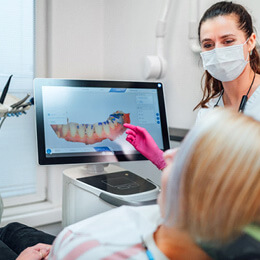
Today, patients have the choice to visit a qualified orthodontist in Huntington to straighten their smile or receive mail-in aligner treatment. Although the DIY approach of mail-in aligners is more cost-effective, it features little to no oversight from a trained professional, leaving more room for complications to arise. Our team at Huntington Orthodontics heartily recommends that every patient receive treatment directly from a trained professional. Although the up-front cost may be slightly higher, it’s the surefire way to get the results you want without any serious issues along the way.
Does Dental Insurance Cover Invisalign?
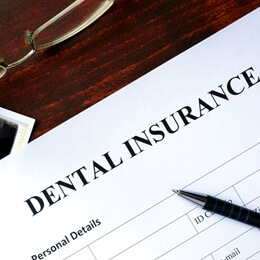
Dental insurance doesn’t always cover Invisalign, but in some cases, plans may apply your benefits to a portion of the cost of the procedure. Our team is happy to help you determine whether this is the case by filing claims on your behalf. We work with a variety of PPO dental insurance plans to maximize your benefits, including Delta Dental, MetLife, Cigna, and countless others.
Options for Making Invisalign Affordable

In addition to helping you get the most out of your dental insurance, we also offer other easy ways for you to pay for your orthodontic treatment. For those who don’t want to foot the entire bill up-front, we offer 0% interest in-house payment plans that don’t require a credit check for approval. However, if you do choose to pay the full cost up-front, we’ll provide you with a 5% discount! We also provide our patients a $250 discount when they accept the treatment plan the same day they come in for their consultation.
Invisalign FAQs

Do you have a list of questions about your upcoming Invisalign treatment? The team at Huntington Orthodontics understands, which is why we’ve compiled some FAQs to help you better understand the process and what you can expect once you’re finished wearing your Invisalign clear aligners. We know any new orthodontic solution can be worrisome; however, we want you to feel completely confident in your decision and will always work to answer your questions and address any concerns along the way. If you would like to schedule an appointment with us to further discuss your treatment plan, don’t hesitate to contact us.
How should I clean my aligners?
When it comes to cleaning your Invisalign aligners, you have two options: Invisalign Cleaning Crystals or a soft-bristled toothbrush, clear soap, and lukewarm water. When taking your trays out to clean them, make sure to never use toothpaste, as this can scratch your aligners and cause them to dull. You’ll also never want to use hot water, as this can warp the plastic and require you to get a replacement tray. You’ll want to make sure you are regularly cleaning your trays to remove dried saliva and bacteria that can build throughout the day.
What should I do if I accidentally damage or lose an aligner?
When receiving your Invisalign aligners, it is advised that you keep them in a protective case while eating or drinking. This will ensure they are not exposed to additional bacteria and particles, and you won’t accidentally throw them away or break them. However, should you lose or damage one or both of your aligners in any way, make sure you keep your previous set. This will keep your teeth from shifting back into their original position. You’ll need to call our office as soon as you realize what has happened. Once we examine your smile, we will determine if you should continue to wear your previous set until new trays can be created or if you can move onto the next set in the series.
Will I need to wear a retainer?
Yes, once you are finished with Invisalign, your orthodontist will provide you with a retainer. This oral appliance will keep your teeth from shifting back into their original position, which they can easily do. Because it takes time for your smile to permanently affix to its new position and alignment, you’ll likely need to wear your retainer full time in the beginning. Once we feel your teeth are more firmly set into position, you may be able to decrease the amount of time spent wearing your retainer and instead, only wear it while asleep at night.
Will my dental insurance cover the cost of treatment?
Depending on your individual insurance policy, you may or may not be covered for treatment. It is likely that most insurance plans offer partial orthodontic coverage to individuals under 18 years of age. If they are recommended for medical purposes (i.e. jaw realignment or problems with chewing), you can expect there to be coverage available; however, if Invisalign is used for cosmetic purposes, you will likely need to inquire about an alternative method of payment.

